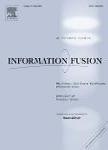版权所有:内蒙古大学图书馆 技术提供:维普资讯• 智图
内蒙古自治区呼和浩特市赛罕区大学西街235号 邮编: 010021

作者机构:Hunan Univ Informat Technol Informat Technol Res Inst Changsha 410151 Hunan Peoples R China China Med Univ Sch Forens Med 77 Puhe RdNorth New Area Shenyang 110122 Liaoning Peoples R China Coll Heilongjiang Natl Training Vocat Educ Harbin 152302 Heilongjiang Peoples R China Shenyang Urban Construct Univ Coll Arts & Media Shenyang 110167 Liaoning Peoples R China Shenyang Univ Technol Sch Informat Sci & Engn Shenyang 110870 Liaoning Peoples R China
出 版 物:《INFORMATION FUSION》 (Inf. Fusion)
年 卷 期:2025年第115卷
核心收录:
学科分类:08[工学] 0812[工学-计算机科学与技术(可授工学、理学学位)]
主 题:Micro-expression detection Facial image Multimodal Ensemble learning Stochastic Gradient Descent
摘 要:A micro-expression is a fleeting, delicate and localized facial gesture. It can expose the true feelings that someone is trying to hide and is seen to be a crucial indicator for spotting lies. Because of its possible applications in a variety of sectors, micro-expression research has garnered a lot of attention. The accuracy of micro-expression recognition still needs to be improved, though, because of the brief and weak motions that make up micro- expressions. In recent years, Deep convolution neural methods have depicted a higher degree of efficiency for complex challenge of face detection. Although several attempts were made for micro-expression recognition (MER), the problem is far from being resolved problem which is portrayed by the lowest accuracy rate depicted by the other models. In this study, present a Facial Micro-Expression Detection and Classification using Modified Multimodal Ensemble Learning (FMEDC-MMEL) approach. The major intention of the FMEDC-MMEL technique lies in the proficient identification of MEs that exist in the facial images. As a pre-processing phase, the FMEDCMMEL technique exploits histogram equalization (HE) approach to improve the contrast level of the image. In the FMEDC-MMEL technique, improved densely connected networks (DenseNet) model is used for learning feature patterns from the pre-processed images. To enhance the proficiency of the improved DenseNet model, stochastic gradient descent (SGD) approach is used for hyperparameter selection process. For facial ME detection, the FMEDC-MMEL technique follows an ensemble of three classifiers namely bi-directional gated recurrent unit (Bi-GRU), long short-term memory (LSTM) and extreme learning machine (ELM). A tailored ensemble learning approach is shown, which combines many machine learning models to improve classification performance and detection accuracy. Sophisticated feature extraction methods are utilized to extract the subtle aspects of micro-expressions, and precision is ma